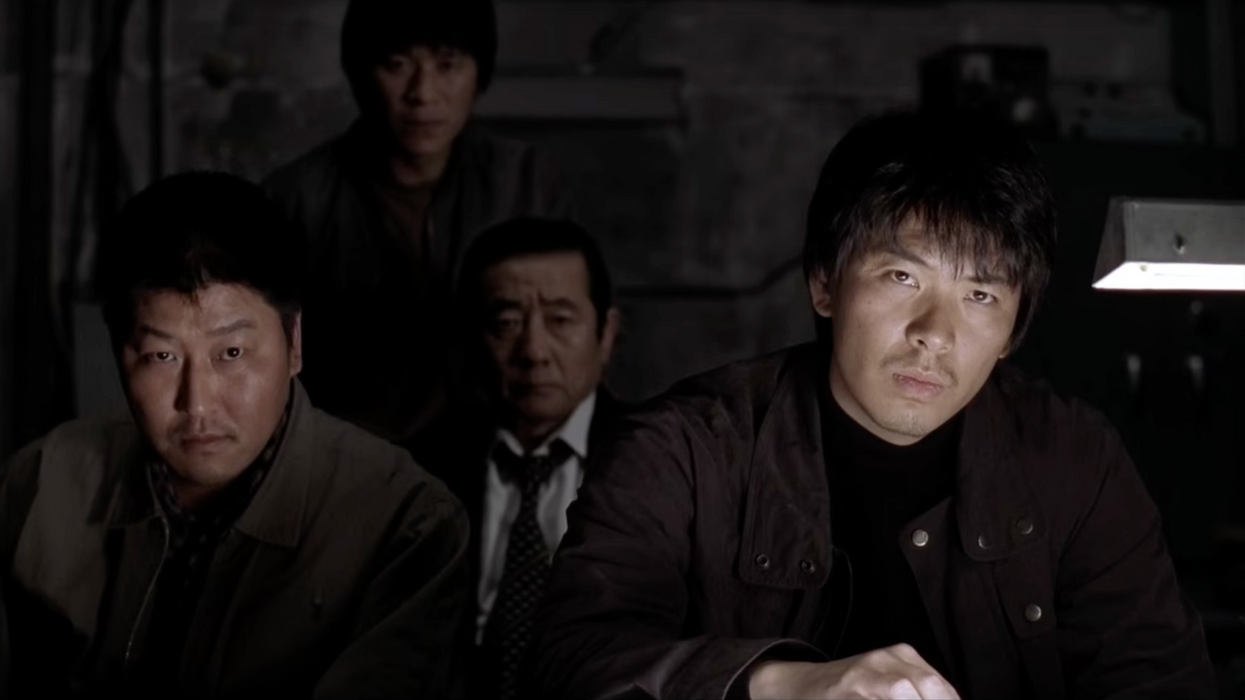Korean Masterpiece 'Memories of Murder' Helps Teach the Virtues of Ensemble Staging
One of the greatest crime films ever made has finally received the Tony Zhou treatment.

Based on the first serial killings reported in South Korea in the late 80's, Memories of Murder is a wonder to behold. It's an example of a film where every element sings just the right note. Here to breakdown perhaps the film's most shining quality — its ensemble cast — is Tony Zhou of the popular Every Frame a Painting series. Blocking actors within the frame is one of the more important yet little talked about component of directing, so enjoy this serious treat in the world of film essays.
[note: If you haven't seen the film, I highly recommend you do so before watching!]
Tony's analysis of the film breaks down into 8 simple observations ("Eight Ways to Get the Audience to Look at a Character"):
- Let Them Speak
- Make Them Brighter or Bring Them Closer
- Let Them Move (Especially Hands or Eyes)
- Put Them in the Center of Frame
- Turn Them Towards the Lens
- Separate Them from the Group
- Isolate Them by Moving the Camera
- Have Other People Look at Them
What I find incredible about Memories of Murder is the dynamic action between the actors and the contrast between heavy subject material and comedic slapstick. The cast works so well together to create unique screen action that has never been duplicated. For example, there's a scene where the lead detective zealously delivers a flying kick to the chest of one of his co-workers that was entirely improvised. Dangerous, yes, reckless, perhaps — but it's amazing, and probably one of the reasons Tarantino calls it one of "the most interesting and complex films" on his top 20 films (from 1992-2009) list.
If you haven't seen it, do yourself a favor and start the year right!
Source: Every Frame a Painting













